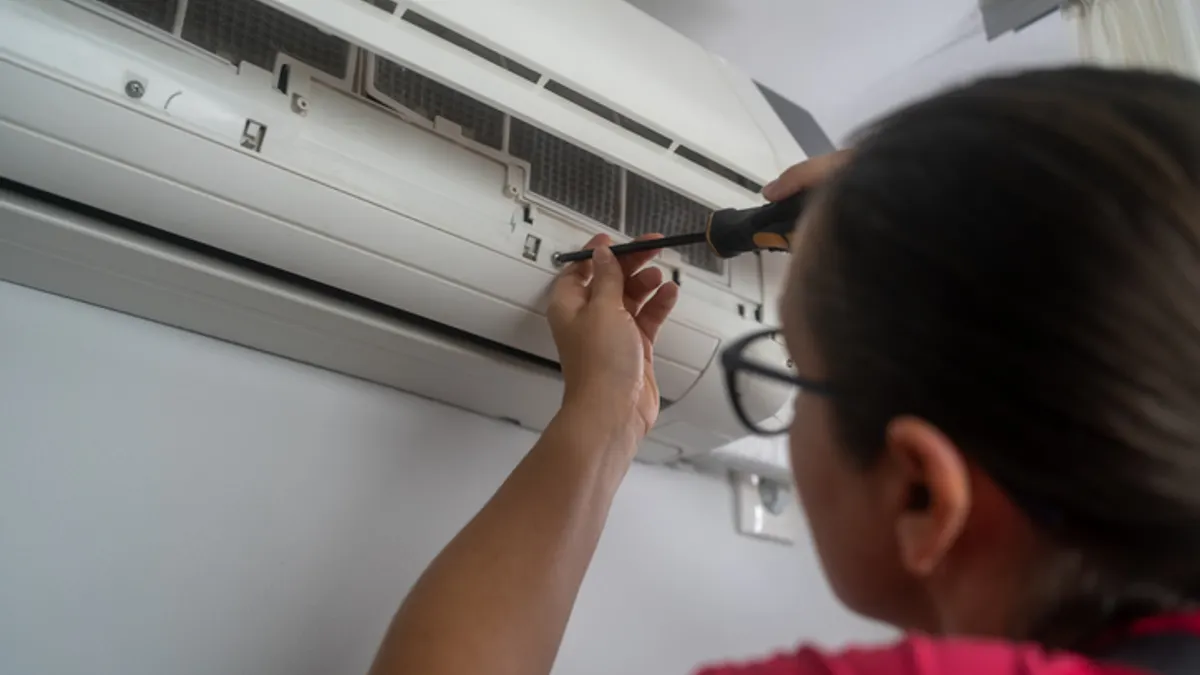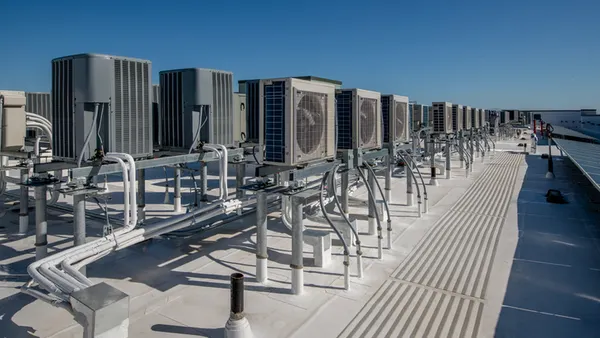Dive Brief:
- LED lighting is up to 44% more efficient than 4-foot fluorescent tubes in linear recessed lighting systems, a University of Michigan research study found.
- Replacing fluorescent lamps with LED ones can save money and energy, while reducing carbon footprint, Greg Keoleian, co-director of the Center for Sustainable Systems at the University of Michigan School for Environment and Sustainability, said in a Dec. 5 release.
- LED lamps not only have a quicker ramp-up to full brightness but are also more energy-efficient when dimmer. In addition, they do not contain mercury, making them a safer choice for indoor use and disposal at the end of their lifespan, the university said.
Dive Insight:
Lighting accounts for 17% of electricity use in U.S. commercial buildings, according to Energy Star, a program managed by the U.S. Environmental Protection Agency. The U.S Energy Information Administration notes that LED lights use up to 90% less energy than incandescent bulbs and last up to 25 times longer, and Energy Star estimates suggest that widespread LED adoption can generate total savings of over $30 billion by 2027.
The University of Michigan study, which compared the costs of one fluorescent lamp and five LED lamps as replacement options, found that LED products are 18% to 44% more efficient than T8 fluorescent lamps, the university said in the release.
The study identified linear recessed lighting systems, also called troffer lights, which have long operating hours, as one of the largest areas of opportunity for energy efficiency improvements. Instead of simply replacing burnt-out lights with new fluorescent lamps, the authors of the study recommended upgrading to LEDs. “Our finding is consistent with the U.S. Department of Energy’s indication that LED systems are 25% more energy-efficient than fluorescents,” said Keoleian, who previously studied the energy and cost savings of replacing incandescent light bulbs with LEDs.
The five LED replacement options the study compared were a plug-and-play Type A LED lamp; a ballast bypass or direct-wire Type B LED lamp which can be retrofitted to an existing fixture; a hybrid Type AB LED lamp that can either work in an existing fixture or in one where the ballast has been removed; a new recessed unit or luminaire that uses an LED lamp, eliminating the need to replace the ballast; and a luminaire that uses an integrated, nonreplaceable LED lamp.
While plug-and-play Type A LEDs are compatible with current fixtures, there is a possibility that ballasts may malfunction before the lamp, but the ease of installing these fixtures can spur its widespread adoption, the study noted.
Direct-wire Type B LEDs, despite their relatively high installation costs, are the lowest-cost option in terms of operation, maintenance and lifecycle expenses, while hybrid LEDs (Type AB) have the lowest upfront costs when an existing ballast is still usable, the researchers found. The study also identified LED luminaires with replaceable lamps as lower-cost alternatives to those with integrated, nonreplaceable lamps, but with fewer design options.
“These findings highlight tradeoffs when deciding between LED options and can help guide commercial building owners and managers who are considering lighting replacement,” Keoleian said.
The research study noted that exact savings depend on lamp costs, electricity rates and labor costs for hiring an electrician for retrofits or replacements. All LED options, except where a whole new lighting system is needed, result in cost savings over time, it said. A brand-new luminaire, however, typically involves higher upfront costs that can result in higher lifecycle costs.











